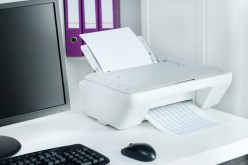Ultimate Guide to Sliding Door Lock Replacement Parts: What You Need to Know
Sliding doors provide convenience and aesthetic appeal to homes, but their locking mechanisms can wear out over time. Understanding the available replacement parts for sliding door locks is crucial for maintaining security and functionality. This guide will explore various components of sliding door locks, how to identify the right parts, the installation process, and tips for maintenance.
Understanding Sliding Door Locks
Sliding door locks come in various styles and designs depending on the type of sliding door you have—whether it’s a patio door or a closet sliding door. The most common types are keyed deadbolts, hook-style locks, and latch bolts. Each of these locking mechanisms serves the primary purpose of securing your sliding doors while also offering different levels of security. Keyed deadbolts provide enhanced protection against forced entry compared to simpler latch systems.
Identifying Replacement Parts
When it comes time to replace a sliding door lock, knowing how to identify the correct replacement parts is essential. Start by examining your existing lock mechanism—take note of its brand, model number, and any specific features that may be unique to your lock system. Many manufacturers provide diagrams or part numbers that can assist in ordering compatible components. Common replacement parts include locking bolts, strike plates, handle sets, and key cylinders.
Installation Process for Lock Replacement
Replacing a sliding door lock may seem daunting at first; however, with basic tools and some DIY knowledge, it can be accomplished without professional help. Begin by removing the existing lock mechanism carefully; this often involves unscrewing screws from the handle or faceplate. Once removed, compare your new replacement part with the old one for fitment before securing it in place using screws provided with your new lock kit. Always test functionality before completing your project by ensuring that both locking and unlocking actions work smoothly.
Maintenance Tips for Sliding Door Locks
To prolong the lifespan of your sliding door locks after replacement, regular maintenance is crucial. Keep tracks clean by vacuuming any debris that may interfere with function; lubricate moving parts occasionally with graphite powder or silicone spray—not oil-based products as they attract dirt over time. Additionally, periodically check all components for wear signs such as rust or damage due to weather exposure since many outdoor installations face these elements regularly.
In conclusion, understanding the mechanics behind sliding door locks will empower homeowners when faced with repairs or replacements in their properties. By identifying necessary parts accurately and following proper installation procedures coupled with routine maintenance practices afterward ensures long-term security access through these functional yet elegant entries.
This text was generated using a large language model, and select text has been reviewed and moderated for purposes such as readability.






